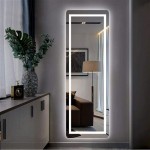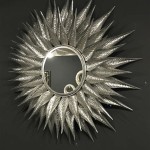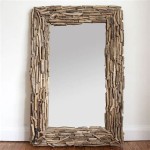Why Do Convex Mirrors Produce Smaller Images?
Convex mirrors, characterized by their outward curvature, consistently produce images that are smaller than the original object. This phenomenon is a direct consequence of the way light rays interact with the curved reflective surface and how our eyes interpret those reflected rays. Understanding this involves examining the principles of reflection, the concept of virtual images, and the unique geometry of convex mirrors.
The fundamental principle governing the behavior of light striking any reflective surface is the law of reflection. This law states that the angle of incidence, the angle at which the incoming light ray hits the surface, is equal to the angle of reflection, the angle at which the ray bounces off the surface. Both angles are measured relative to the normal, an imaginary line perpendicular to the surface at the point of incidence.
In a convex mirror, the curvature causes the normal line at each point on the surface to point outwards in different directions. This divergent orientation of the normals is crucial in understanding why the reflected rays spread out. Consider multiple parallel rays approaching the mirror. Each ray will strike the surface at a different point with a different normal, thus reflecting at a different angle. Because the mirror surface curves outwards, these reflected rays diverge, traveling away from each other.
The diverging nature of the reflected rays is key to the formation of the smaller image. Our eyes perceive images based on the assumption that light travels in straight lines. When the diverging rays from the convex mirror enter our eyes, our brain traces them back along straight lines to their apparent origin. These lines converge behind the mirror, at a point where they appear to intersect. This point of apparent intersection is where the image seems to be located, and it is always closer to the mirror than the actual object.
The image formed by a convex mirror is a virtual image. Unlike a real image, which is formed by the actual intersection of light rays and can be projected onto a screen, a virtual image cannot be projected. It exists only as a perceived image located behind the mirror's surface. This perceived location, combined with the diverging rays, results in the image appearing smaller than the actual object.
The size difference between the object and its image in a convex mirror can be understood by considering the geometry of triangles. Imagine two rays originating from the top of an object: one ray traveling parallel to the principal axis (the line passing through the center of curvature and the mirror's vertex) and the other ray passing through the center of curvature. The reflected ray of the first ray appears to originate from the focal point, while the second ray, hitting the mirror perpendicularly, reflects back along its original path. The image of the top of the object is formed where these two reflected rays appear to intersect behind the mirror.
Due to the divergence of the rays and the position of the virtual image behind the mirror, the triangle formed by the object, the mirror, and the observer is larger than the triangle formed by the image, the mirror, and the observer. This difference in triangle sizes directly corresponds to the difference in size between the object and its image, with the image being smaller.
The distance of the object from the mirror also influences the image size. As an object moves closer to the convex mirror, its image appears to grow larger, although it always remains smaller than the object. Conversely, as the object moves farther away, its image diminishes in size, appearing to shrink towards the focal point.
The smaller, virtual images produced by convex mirrors offer several practical advantages. The wider field of view, a consequence of the diverging rays, allows for a greater area to be observed. This characteristic makes convex mirrors valuable in a variety of applications, including security mirrors in stores, rearview mirrors in vehicles, and at blind corners on roads. These applications benefit from the ability to see a smaller, compressed representation of a larger area, enhancing situational awareness and safety.
Furthermore, the reduced image size ensures that objects at different distances appear relatively smaller in proportion to their actual size. This helps in judging relative distances, although it makes accurate depth perception more challenging. Nevertheless, in situations where a broader view is more critical than precise depth perception, such as monitoring a large area for security purposes, the characteristics of convex mirrors prove highly advantageous.
The consistent production of smaller images by convex mirrors is a direct consequence of the laws of reflection and the geometry of the mirror’s curved surface. The diverging reflected rays lead to the formation of a virtual image behind the mirror, which our brain interprets as a smaller representation of the original object. This unique property makes convex mirrors invaluable tools in various applications requiring a wider field of view and an understanding of relative object positions.
Why Does A Convex Mirror Form Small Image Quora
Why Does A Convex Mirror Form Small Image Quora

Uses Of Convex Mirror Definition S And Characteristics

Question Identifying The Maximum Size Of An Image Produced By A Convex Mirror Nagwa
Objects In The Mirror Are Actually Images Article Khan Academy
Can A Convex Mirror Form Magnified Image Quora
Lesson Explainer Drawing Ray Diagrams For Convex Mirrors Nagwa
Lesson Explainer Drawing Ray Diagrams For Convex Mirrors Nagwa

Convex Mirror Definition Equation Examples Lesson Transcript Study Com

Convex Mirror Image Formation Conditions And Ray Diagrams








